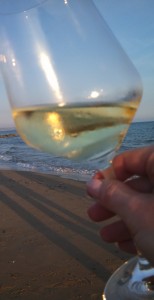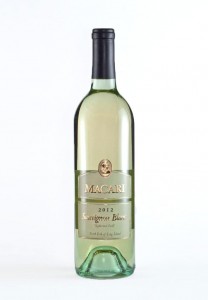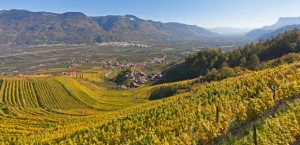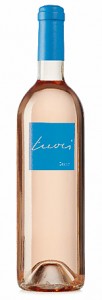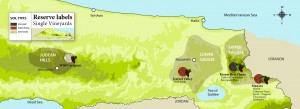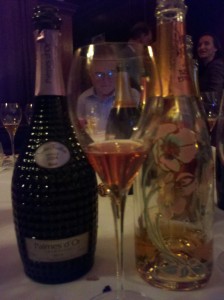Quater 2012, IGPSicilia
This blend of Grillo, Catarratto, Carricante and Zibibbo has pronounced aromas of floral, blossom, and citrus. The dry palate is fresh with full body.
Favinia La Muciara 2012, IGP Sicilia
A blend of Zibbibo, Grillo and Cataratto, the nose offers wet stone and citrus aromas along with some white flowers. On the medium-bodied palate, ripe citrus flavors stand out, accompanied by minerality and a hint of salinity, reminiscent of a Fino sherry.
Favinia Le Sciabiche 2011, IGP Sicilia
Bringing together Perricone and Nero d’Avola, notes of red flowers and fresh berries greet the nose. The dry, medium+ bodied palate has good acidity and shows flavors of berries, wood, herbs and minerality.
Quater 2009, IGP Sicilia
A blend of Nero d”Avola, Perricone, Frapatto and Nerello Cappuccio, this wine spends several months in barrique. It has cocoa, woody and balsamic notes with velvet texture, dark fruit flavors and nice depth.
Ribeca 2010, IGP Sicilia
Produced from 100% Perricone, this wine offers bramble fruit on the nose with rich raspberry fruit, spice and medium tannins on the palate.
Donnafugata
Lighea 2012, IGP Terre Siciliane
This dry Zibibbo offers up heady floral and citrus aromas on the nose. The medium-bodied palate has floral, tangerine and pineapple with high acidity and long length.
Chiarandà 2009, Contessa Entellina DOP
A partially oak-aged Chardonnay, this wine has aging potential. Apple, butter and nuts dominate the nose, with a creamy, full-bodied palate and long length.
Sedàra 2010, IGP Sicilia
With Nero d’Avola, Cabernet Sauvignon, Syrah and Merlot, this wine has cherry and herbal aromas that persist on the palate, with firm tannins.
Mille e una Notte 2007, Contessa Entellina DOP
Primarily from Nero d’Avola, this wine offers wood, black cherry and spice aromas with an elegant, rich and layered palate, culminating in very long length.
Ben Ryé 2010, Passito di Pantelleria DOP
An intense nose with notes of marmalade, orange peel, spice, caramel and apricot repeated on the equally intense, full-bodied palate. This wine has richness, depth and long length.
Gorghi Tondi
“Meridiano 12″ Bianco 2012, Sicilia DOP
A blend of 70% Cataratto and 30% Chardonnay, this wine has notes of apple with vibrant acidity, medium+ body and a slight grip on the palate.
Kheirè 2012, Sicilia DOP
This 100% Grillo wine displays notes of floral, dried, herbs, pear and melon, with depth and complexity on the full-bodied palate.
Coste a Preola Rosso 2011, IGP Sicilia
This is an easy-drinking Nero d’Avola with fresh black cherry, floral and herbs on the nose and palate.
Segreante, IGP Sicilia
With 100% Syrah, this wine is very earthy and spicy with bright red fruit, medium+ body and nice length.
Grillo d’Oro Passito 2010, IGP Sicilia
Produced from botrytis-affected Grillo grapes and aged in oak for 12 months, this wine has honey, apricot and fresh grape aromas with spice, licorice and beautiful acidity on the medium-sweet palate.
MandraRossa
Fiano 2012, Sicilia DOP
Fresh floral, peach, nectarine and almond aromas greet the nose and persist on the palate.
Santannella 2011, IGP Terre Siciliane
A blend of Fiano and Chenin Blanc, this dry, white wine is rich and complex with beautifully balanced oak and depth.
Nero d’Avola 2012, Sicilia DOP
Displaying fresh fruit aromas of cherry and strawberry on the nose, tar, herbs and tannins pervade the rich palate.
Syrah 2012, Sicilia DOP
This wine offers blackberry, earthy and mineral notes, which are repeated on the full-bodied palate.
Cartagho 2009, IGP Sicilia
Another 100% Nero d’Avola, this wine offers up rich, intense cherry, plum, and floral aromas with herbal, tar, oak and wet leaves joining on the palate.
Canicatti
Satàri Frizzante 2010, IGP Sicilia
Made from 100% Cataratto, this sparker has an expressive nose of floral and pear aromas with a soft mousse, excellent acidity and ripe citrus on the palate.
La Ferla Rosato 2012, IGP Sicilia
This Nero d’Avola-Nerello Mascalese blend has a deep pink hue with notes of melon, berries and a slight grip on the palate.
Centuno Nero d’Avola 2010, IGP Sicilia
This wine offers up firm tannins, intense cherry aromas and flavors, along with tar and herbs. It needs time to evolve.
Scialo 2008, IGP Sicilia
This Nero d’Avola- Syrah blend has lovely spice, earth, herbs and red fruit aromas and flavors, with nice length.
Canicatti Aynat 2006, IGP Sicilia
This wine displays concentrated, rich cherry and cranberry fruit with woody, spice, tar and herbs on all of which linger on the full-bodied palate.
Tasca d’Almerita
Tascante Buonora 2012, IGP Terre Siciliane
This Carricante wine from Mt. Etna displays citrus and minerality on both the nose and palate. Fresh and structured with long length.
Didyme 2012, IGP Salina
Produced from Malvasia at Tenuta Capofara, with floral and peach aromas, this dry white has full body, with fresh fruit and vibrant acidity.
Chardonnay 2010, IGP Sicilia
Fermented in 350L French barrels (70% new and 30% 2nd and 3rd year), this wine has aromas and flavors of bruised apple, rich caramel, candied lemon and a slight toothpick character.
La Monaca Syrah 2009, IGP Sicilia
Hailing from the Sallier de la Tour estate in Monreale this wine shows red fruit, spice and earth, with silky tannins on the palate.
Rosso del Conte 2007, Contea di Sclafani DOP
This wine is rich and intense with both red and black fruit aromas and flavors. The French oak is beautifully integrated, making for an elegant, yet powerful, wine that offers very long length.

